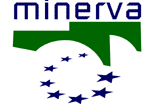| |
Italian Semester of Presidency of the European Union
EUROPEAN CONFERENCE OF MINERVA
Quality for cultural Web sites
Online Cultural Heritage for Research, Education
and Cultural Tourism Communities
Parma, 20-21 November 2003, Auditorium Paganini
Paolo Paolini - Nicoletta Di Blas (Politecnico
di Milano)
Marco Speroni (University of Lugano)
"HELP: Listen to a Web Site - Discovering new design
solutions for web accessibility"
ABSTRACT
Many of the activities of our contemporary society are based on
information (and possible operations) made available through the
World Wide Web. Practical information, images, presentations, sale
catalogues, booking and reservations, selling and buying, are exchanged,
purchased, activated through the Web (or find their vehicle in the
Web).
The problem of how to make web applications "accessible"
to people with visual disabilities has recently gained much interest:
W3C consortium, that supplies the "strategic" guidelines
for the web, has emanated a standard, based on documents prepared
by associations of visually impaired people.
The W3C standard is an important, though still inadequate, step
to solve the problem. Anyone who sees a blind person using a screen
reader can realize that although the site complies with the W3C
standard, it is almost unreadable in practice.
The Politecnico di Milano (HOC Laboratory of the Department of Electronics
and Information) in cooperation with TEC-Lab (University of Italian
Switzerland), has developed an innovative technology that allows
overcoming most of the W3C limitations. New guidelines for accessibility,
as well as a new design technique (an evolution of W2000, developed
by Politecnico di Milano, HOC lab), have been developed, allowing
the implementation of a new generation of Web sites, very usable
and effective for sighted people, optimized for visually impaired
people. The first deployment of this technology is the Web site
for the Munch's exhibition taking place in the Staatlichen Museen
of Berlin (www.munchundberlin.org). The Web site has been realized
within HELP, a project partially funded by the European Commission,
under the program CULTURE 2000.
|
|
|


